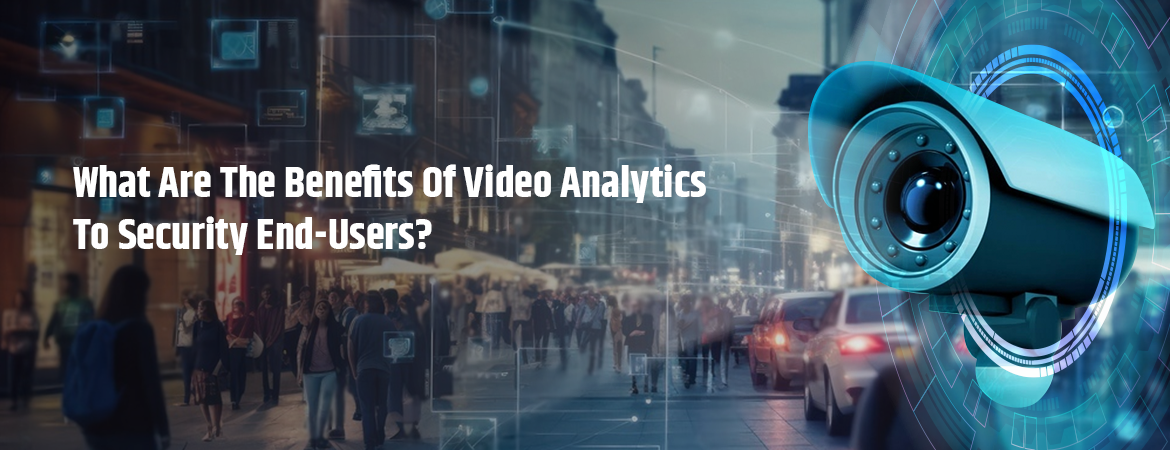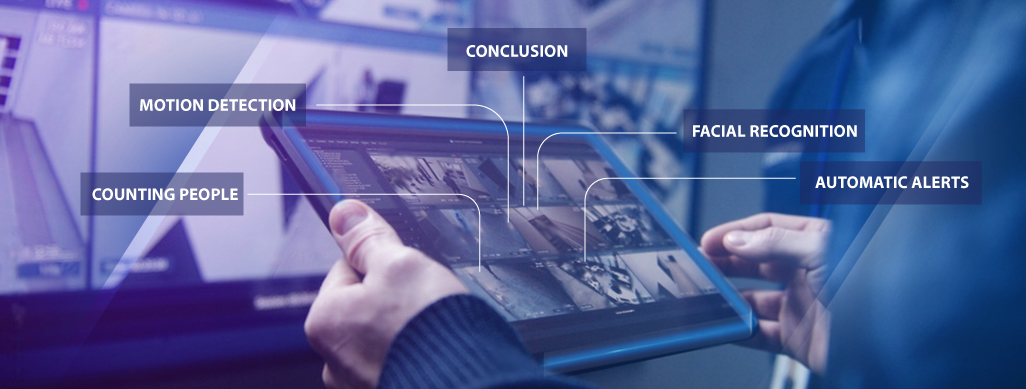
We use cookies to ensure that we give you the best experience on our website.
By using this site, you agree to our use of cookies. Find out more.
Video analytics unlock a wealth of intelligence from video footage that helps security end-users in numerous ways. From automatic alerts for real-time incident response to people counting for business optimization, these features save time and provide objective metrics.

Video Analytics surveillance systems have advanced considerably in recent years with the integration of video analytics capabilities. Beyond merely recording footage, modern video analytics software can analyze video streams to extract meaningful insights. This blog discusses some of the key benefits these advanced features provide to security end-users such as businesses, building managers and event organizers. Automatic alerts, people counting, facial recognition, motion detection and search functions are transforming how video surveillance is used from a passive to an active security tool. Read on to learn how video analytics can enhance situational awareness, streamline operations and strengthen security for end-users.

With rising security threats, video analytics has become a powerful tool for manufacturing facilities to enhance safety and security. Advanced video analytics can automatically detect, track and analyze activities captured on CCTV footage. It recognizes anomalies and threatening behaviors like loitering, tailgating or abandoned packages through computer vision and AI. This helps security teams to quickly identify suspicious events and respond proactively.
Video Analytics also allows automated perimeter protection by detecting trespassing, crossings of invisible tripwires and transit of unauthorized vehicles. It provides object counting and heat mapping of crowded areas. With intelligent video monitoring, manufacturers can better protect plant infrastructure, inventory, employees and visitors. This enhances overall security postures at manufacturing sites in a non-intrusive, cost-effective manner.
Leveraging technology improves security measures for manufacturers. One such innovative tool is video analytics which enhances monitoring capabilities beyond traditional CCTV. The automated detection and alerts provided by video analytics deliver significant benefits for security teams to efficiently protect manufacturing facilities and assets. Some of its benefits are-
One of the primary advantages of automatic alerts generated by video analytics software is that it allows security teams to be immediately notified of critical events in real-time. The system can be programmed to send push notifications or emails to guards' devices if predefined triggers are detected, such as a person entering a restricted area after hours. This ensures issues are addressed while they are occurring rather than discovering them long after the fact. With alerts, security personnel do not need to continually monitor live feeds and can instead focus on responding to relevant situations as they arise. Not only does this improved efficiency, it also increases the chances of catching incidents in progress or interrupting criminal plans.
Receiving automatic alerts also helps improve evidence gathering. Whenever the system sends a notification, it typically attaches a short video clip highlighting the detected motion or event. This provides crucial proof that can be reviewed later for investigations. It serves as objective documentation of timeline and details, which may be difficult to recollect accurately from memory alone. Alerts also generate audit trails, which are useful for instances like insurance claims or lawsuits. The immediate notification and accompanying evidence significantly strengthens security by facilitating faster response times and clearer accountability.
Being able to accurately count the number of people entering and exiting an area through video analytics services provides invaluable business intelligence. Footfall data shows traffic patterns over time so operators can optimize staffing accordingly. They can see if more employees are needed during peak hours or if cutting shifts during off-peak times would save costs. Counting at entrances and exits also demonstrates the impact of marketing campaigns or events. With concrete visitor numbers, rather than vague estimates, operators can fine-tune strategies. Counting helps resolve capacity questions too. It confirms if restrictions need adjustment up or down based on fire codes.
Beyond day-to-day operations, people counting reveals broader trends over weeks or months. This offers insights into seasonal fluctuations to better plan inventory or staff holiday schedules in advance. It also quickly detects irregularities that may indicate underlying issues. For example, an unexpected drop in counts might show a need for maintenance like cleaning or repairs. Counting data therefore supports more robust decision-making across strategic, tactical and corrective domains. It replaces assumptions with actual metrics, driving both efficiency and problem-solving. With automation, this important analytics can be done continuously without extra manpower.
Facial recognition technology within video analytics systems allows for advanced identification capabilities. By scanning captured facial images and comparing them to watchlists of known persons of interest, the system can alert security if a blacklisted individual enters the premises. This helps detect threats in a contactless manner. Facial recognition also assists in investigating past incidents by running through old footage to identify unknown people. It quickly generates leads that may have otherwise gone unnoticed.
The identification process happens automatically in the background without needing human review of every single face. As a result, security teams can focus on higher priority tasks. Facial recognition also boostes accuracy compared to human recollection of visual characteristics. Matching is done based on the numeric biometric data of facial features instead of subjective descriptions. This makes the technology very useful for touchless screening and can act as a effective crime prevention tool.
Motion detection takes basic security camera footage to the next level by discerning movement within the frame. The software can be customized to send alerts for any movement in restricted areas after hours or ignore authorized motion patterns. This allows security personnel to exclusively focus on unusual activity rather than Scrutinizing constant live feeds. Detection occurs even in poor lighting or blind spots that human monitoring may miss.
By defining zones, the motion sensor ignores expected movement in high traffic lanes but flags if anything enters unused sections of the space. It effectively turns static cameras into smart, proactive sensors. Coupled with recording capabilities, it also automatically saves clips of movement rather than huge banks of still footage for review. Motion preview images provide context before playback so precious time is not spent scanning through still sections in hindsight. Together, these smart features make security operations highly optimized and chances of turning a blind eye to potential threats are greatly reduced.
Video analytics unlock a wealth of intelligence from video footage that helps security end-users in numerous ways. From automatic alerts for real-time incident response to people counting for business optimization, these features save time and provide objective metrics. Facial recognition boosts identification capabilities while motion detection and search functions improve efficiency of incident review. As cameras become smarter sensors, video analytics empower security teams to be more proactive and optimized. When leveraged fully, these advanced capabilities truly maximize return on investment for video surveillance systems to deliver enhanced safety, cost savings and business decision making support.
Leave a Comment
Your email address will not be published.